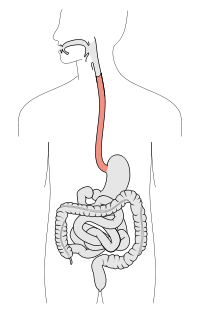
Photo from wikipedia
Partial melting of continental crust and evolution of granitic magmas are inseparably linked to the availability of H2O. In the absence of a free aqueous fluid, melting takes place at… Click to show full abstract
Partial melting of continental crust and evolution of granitic magmas are inseparably linked to the availability of H2O. In the absence of a free aqueous fluid, melting takes place at relatively high temperatures by dehydration of hydrous minerals, whereas in its presence, melting temperatures are lowered, and melting need not involve hydrous minerals. With the exception of anatexis in water‐saturated environments where anhydrous peritectic minerals are absent, there is no reliable indicator that clearly identifies the presence of a free aqueous fluid during anatexis. Production of Ab‐rich magmas or changes in LILE ratios, such as an increase in Sr and decrease in Rb indicating increased involvement of plagioclase, are rough guidelines to the presence of aqueous fluids. Nevertheless, all indicators have caveats and cannot be unequivocally applied, allowing for the persistence of a bias in the literature towards dehydration melting. Investigation of mineral equilibria modelling of three metasedimentary protoliths of the Kangaroo Island migmatites in South Australia, shows that the main indicator for the presence of small volumes of excess water under upper amphibolite to lower granulite facies conditions (660–750°C) is the melt volume produced. Melt composition, modal content or chemical composition of peritectic minerals such as cordierite, sillimanite or garnet are relatively insensitive to the presence of free water. However, the mobility of melt during open system behaviour makes it difficult to determine the melt volume produced. We therefore argue that the presence of small volumes of excess water might be much more common than so far inferred, with large impact on the buffering of crustal temperatures and fertility, and therefore rheology of the continental crust.
Journal Title: Journal of Metamorphic Geology
Year Published: 2019
Link to full text (if available)
Share on Social Media: Sign Up to like & get
recommendations!